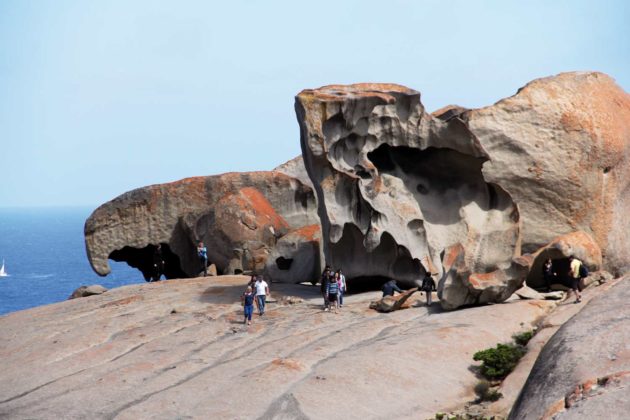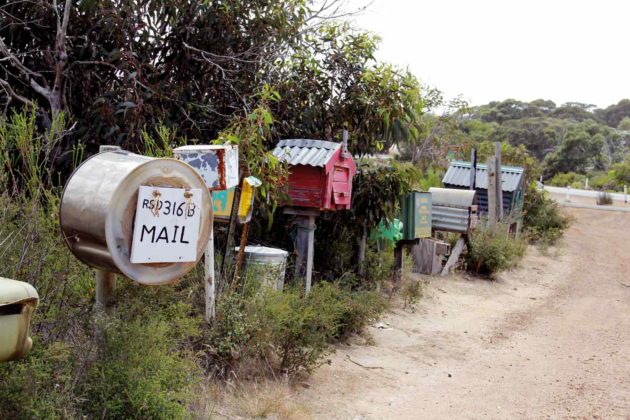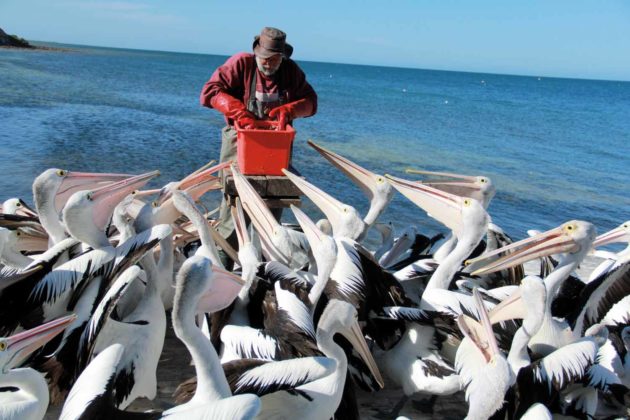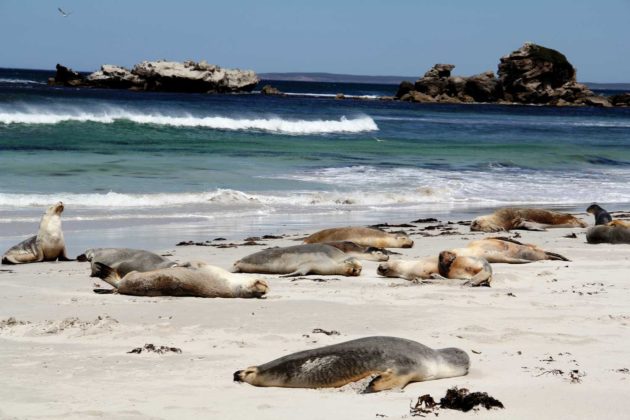“When you arrive on Kangaroo Island, set your watch back by 20 years”, said Bill Prime, my guide from Kangaroo Island Wilderness tours. Kangaroo Island, or KI as the locals affectionately call it, is the third largest island in Australia, with just over 4500 people inhabiting an area of 4500 sq km. A quarter of the island is conserved and more than half the vegetation has never been cleared.
Dubbed as the ‘Galapagos of Australia’ this seemed to be the most elemental place on earth. “Many people are surprised by the sheer size of the island, it’s almost seven times the size of Singapore—they come with bicycles, expecting to ride across the island!” says Bill. Echidnas shuffle across the road, Goanna lizards leave faint trails on red sand and koalas with limpid eyes gaze at me through a canopy of eucalyptus trees. Winding, empty roads and dramatic landscapes—this is the closest that I had been to the Garden of Eden. Yet, there was sadness, by the sight of squashed possums and decomposing kangaroos on the roads. They were victims of passing cars, when they dart out during dusk, surprising the drivers. “Big kangaroos can actually damage the cars- that’s why we have ‘roo bars’…” said Bill pointing to the front railings of his Range Rover.
How Kangaroo Island got its name
The separation of the island from the mainland has frozen its ecosystems in time. Long ago it was Karta, the land of the Dead, where aboriginal people believed that the soul rested before leaving the earth. It was in 1802 that Mathew Flinders arrived on the island, and hunted 31 kangaroos to make a stew to feed his hungry men after days on sea. He named the island after the gentle creatures that he had made a meal of! For many years KI was the inhospitable hang-out for mutineers, pirates, whalers and sealers, who kidnapped aboriginal women from Tasmania. In the 1800s KI was a haven for sheep farming. In the 1950s, soldiers who returned from the war were given land on the island and farming started here in earnest. But when the wool trade lost its magic in the 80s, islanders diversified into boutique industries like bee keeping and wines.
Laze with the sea lions
Over the next few days, I explored the glorious 316 mile coastline and the hinterland with dramatic cliffs and wet lands. My date with the Australian sea lions led me to Seal Bay Conservation Park with its walkways through golden sand dunes. The sea lions lolled about like logs, yawning, belching and stretching after three lengthy days of fishing, which had left them exhausted. As I watched young pups suckle their mothers and huge bulls displaying their might, Bill stumped me by saying, “If you want a job on KI, you can be a koala catcher.” “Koala catcher?” I asked bewildered. I learnt that Koalas were introduced on the island in the 1920s and they multiplied so rapidly that now they have to be sterilised and many have been shipped back to the mainland!
I walked through the bizarre Little Sahara—an area filled with undulating sand dunes where tourists ‘sand board’ on little toboggans. We drove through the Flinders Chase National Park sprawling over 74,000 hectares with some patches of ghostly skeletal trees, the result of a bushfire that wrecked the vegetation a few years ago. I wound my way through an elaborate boardwalk to see Admirals’ Arch, a cave cut through by the ferocity of waves with legions of New Zealand fur seals, sunning themselves on step-like rocks.
A taste of island cuisine and culture
I enjoyed al fresco meals, set up in the middle of nowhere, with table linen, chilled wine, salads, falafel and poached pears in red wine, with the wind in my hair and sand between my toes. As the ocean breeze honed my appetite, I gorged on grilled Haloumi cheese and Local Island Pure yoghurt flavoured with honey.
Without doubt, I had fallen in love with the uncomplicated ‘island lifestyle.’ There were no traffic lights, no predators like foxes, people rarely locked their homes and Bill recalled that when he first moved into the island, he had read a police report about the ‘crime’ of someone moving Mrs’s X’s potted plant from the front yard to her back yard!
He drove me into the Vivonne Bay ‘post office’—in the middle of nowhere and I noticed a line of quirky post-boxes. Mail delivery is still important on KI. Quite often, residents order in tools, garden equipment and large parcels… so the innovative mailboxes you see are actually old microwaves, fridges, boots fashioned from oil drums and even a big metal milk can. At Stokes Bay I walked through hidden walkways and rocky ledges to ‘discover’ a deserted white sandy beach with a large rock enclosed pool, perfect for paddling. “If there is one car in the parking lot, no self-respecting islander would head to that ‘crowded’ beach,” quips Bill.
Though the island is all about nature and wildlife, haute hotel options have emerged in recent years. I enjoyed the eerie isolation, broken by the sounds of sea birds, watched pelicans being fed on the Kingscote pier by a ‘bird man’, who had been doing that for years at the same time, and cradled an injured joey at the Rustic Blue art gallery. I felt miles from civilisation in this secluded utopia where life is in the slow lane, where and nature nurtured me…
Fact File for Kangaroo Island
How to get there: Fly into Adelaide on Malaysian Airlines and connect to Kangaroo Island on Regional Express [REX]. You can also take a ferry from Adelaide to the Island.
Where to stay: Worth a splurge is Southern Ocean Lodge with suites and sunken baths on a cliff top location. Alternatively you could choose to stay in Kingscote, the main town in the plush Aurora Ozone apartments.
What to do: Tie up with a tour operator for a two/three/four day itinerary. You can even indulge in adventure activities like quad biking, sand boarding and surfing.
Buy: KI honey from Clifford’s Farm, eucalyptus oil from Emu Ridge Distillery, art and paintings from local art galleries, boutique wines and gins.
This was first published in the April 2013 issue of Complete Wellbeing.





